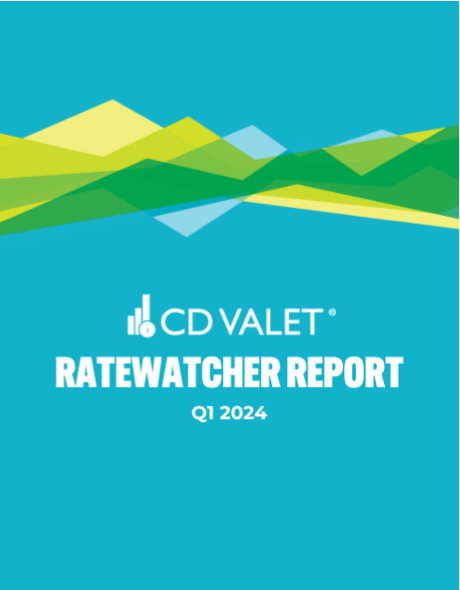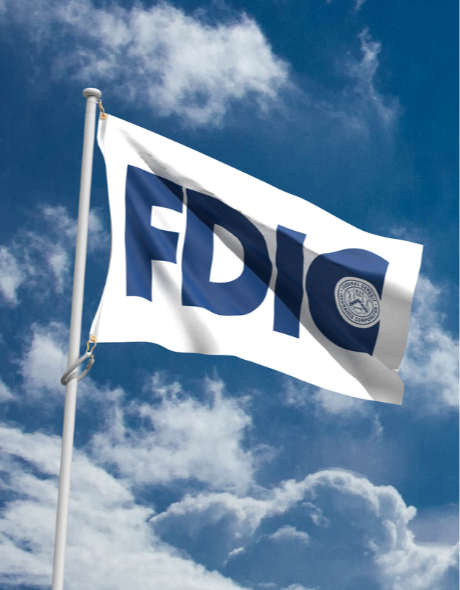If you’re thinking about ways to save your money, consider putting it in a Certificate of Deposit (CD). A CD is a bank account with an interest rate that is generally higher than a regular savings account. CDs typically have a fixed-term length, fixed-term rate, and a fixed date of withdrawal, known as the maturity date, and generally have a minimum and maximum dollar amount required to get things started.
But it’s important to know, that banks will charge an early withdrawal penalty fee when you withdraw funds from your CD before it reaches the maturity date – so it’s best to keep your funds in your CD account until it’s reached its term to maximize what you earn.
You may be asking yourself, “Isn’t this a thing from the 80s?” CDs were extremely popular in the 1980s and 1990s when interest rates even at one time hit an all-time high of 18% APY (Annual Percentage Yield). Lower interest rates for the last two decades have diminished consumer interest in CDs, but they are now back in fashion as rates have reached their highest level in 22 years.
Now that you know what a CD is and what it offers, let’s look at how CDs work. In exchange for locking in the interest rate, you set it (your money), forget it (don’t withdraw), and let it grow (earn interest) until your CD is fully matured (reached its term). But CDs, like people, aren’t one size fits all. We’ve broken down the different types of CDs so you can decide which best fits your needs to reach your savings goals!
Types of Certificates
Fixed-Rate:
First, we’ll look at Fixed-rate CDs, which are the most popular. These CDs supply a fixed interest rate for the duration of the CD, which typically ranges from three months to five years.
And if you’re curious, this CD often offers a higher interest rate than other types of CDs. While the general rule is that longer-term CDs usually offer a higher return, that isn’t always the case. An inverted yield curve may result in shorter-term CDs delivering a higher yield.
Jumbo:
Bigger doesn’t always mean better, but in this case, some would say it is. Everything that is required (minimum deposit), available (interest rate), and earned (anticipated earnings) from this CD is as it sounds, JUMBO. Jumbo CDs require a higher deposit – typically $100,000 but could be as high as $1,000,000 minimum – but in return, it pays a higher rate of interest equating to more savings.
When you have a bigger nest egg that you’d like to keep in a safe place, you’ll gain more than a traditional CD by opening a Jumbo CD.
It’s important to ask financial institutions if they have Jumbo CD rates, as not all offer them.
Liquid:
Now for a not-so-traditional twist, there is the Liquid CD. Surprisingly, this type of CD takes the disadvantage of CDs and turns it into an advantage. The Liquid CD (also known as the no-penalty CD) allows you to withdraw your money without penalty prior to maturity.
So, if you need the money before it matures or find a better investment, this could be the CD for you. The disadvantage is that these CDs typically will have a lower interest rate than other types of CDs.
Bump-Up:
What if we told you about a CD that can change in response to rising and falling interest rates? This would be the Bump-up or Variable CD, which, like a standard CD, will keep your money for a set period but will modify the initial interest rates if you request the change based on the agreed-upon terms.
The advantage — you earn more money if interest rates rise throughout your term; the disadvantage – if interest rates do not climb during your term and your yield remains the same or if interest rates fall the yield may not be the same depending on the terms of the variable rate CD.
Add-on:
You may be asking yourself, does Add-on mean what I think it means? Aren’t you locked in with the amount that you initially started with? Usually, but with an Add-on, you can deposit more in the account to add-on to the principal.
Of course, since you are allowed to add to your original deposit, you should be aware of the disadvantages. Add-on CDs generally offer lower interest rates, in exchange for your ability to add new funds into the account.
Note that you should find out how many extra deposits are available to you, as most financial institutions limit the number of deposits you may make based on the duration of the term.
How do I choose?
Choosing your CD ultimately depends on your goals and how long you want to save. Once you determine your savings goals, you’ll be able to decide on the CD that will help you achieve them.
The interest rate and term are the most important factors of a CD. You can find more than 25,000 CD rates at CD Valet, a national marketplace that provides consumers with a place to compare* certificates of deposit at the rates and terms that align with their savings goals!
*CDs at participating financial institutions can be opened directly from CDValet.com.
FAQs
What is the role of CD Valet in finding the right CD?
CD Valet is a national marketplace that allows consumers to compare over 25,000 CD rates at participating financial institutions, helping individuals choose certificates that align with their savings goals.
How do Fixed-Rate CDs work?
Fixed-Rate CDs offer a stable interest rate throughout their term, ranging from three months to five years. They are a popular choice for predictable returns.
How do I choose the right CD type?
The choice depends on your savings goals and timeframe. Consider factors such as interest rates, terms, and your financial objectives. CD Valet provides a platform to compare rates.












